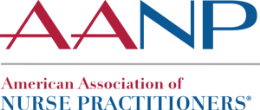Nurse Practitioner, No. 1 Ranked Health Care Job, Reports Increase in Numbers

Media Contact: Bryan Black
AUSTIN, TEXAS (April 7, 2022) – The American Association of Nurse Practitioners® (AANP) today released new data showing the current number of nurse practitioners (NPs) licensed to practice in the United States has risen to more than 355,000, an increase of 9% from the estimated 325,000 reported in May 2021. As demand for comprehensive health care escalates to address primary care provider shortages and widespread provider burnout due to the COVID-19 pandemic, this steady increase of NPs ensures communities across the nation will have access to high-quality care.
“Nurse practitioners are answering the call to provide vital health care services to all Americans,” said AANP President, April N. Kapu, DNP, APRN, ACNP-BC, FAANP, FCCM, FAAN. “With the challenges of the pandemic and the demand for more accessible and equitable care, NPs continue to enhance health care delivery across all settings. Today’s nurse practitioner count indicates that demand for these highly-qualified clinicians continues to be on the rise — and for good reason.”
NPs have provided patients of all ages with positive outcomes since the NP role’s induction more than 50 years ago, delivering comprehensive, patient-centered, holistic care through primary, acute and specialty health care services in more than 1 billion patient visits each year. In addition to diagnosing, treating and prescribing for acute, episodic and chronic illness, NPs focus on health promotion, disease prevention, health education and counseling.
Recently, U.S. News and World Report ranked the NP role first on its 2022 Best Health Care Jobs list and second on its 2022 100 Best Jobs list based on annual rankings that consider the most important aspects of a job, including opportunities for growth, work-life balance and salary.
By 2026, the U.S. Bureau of Labor Statistics projects that the NP role will have grown by 36%.
“Everyone deserves access to quality health care – regardless of race, ethnicity, income level or demographic area,” Kapu added. “Yet a staggering 83 million Americans live in health care provider shortage areas. Nurse practitioners are prepared to close these gaps and meet the growing need for health care services.”
###
The American Association of Nurse Practitioners® (AANP) is the largest professional membership organization for nurse practitioners (NPs) of all specialties. It represents the interests of the more than 355,000 licensed NPs in the U.S. AANP provides legislative leadership at the local, state and national levels, advancing health policy; promoting excellence in practice, education and research; and establishing standards that best serve NPs’ patients and other health care consumers. To locate an NP in your community, visit npfinder.com. For more information about NPs, visit aanp.org.

